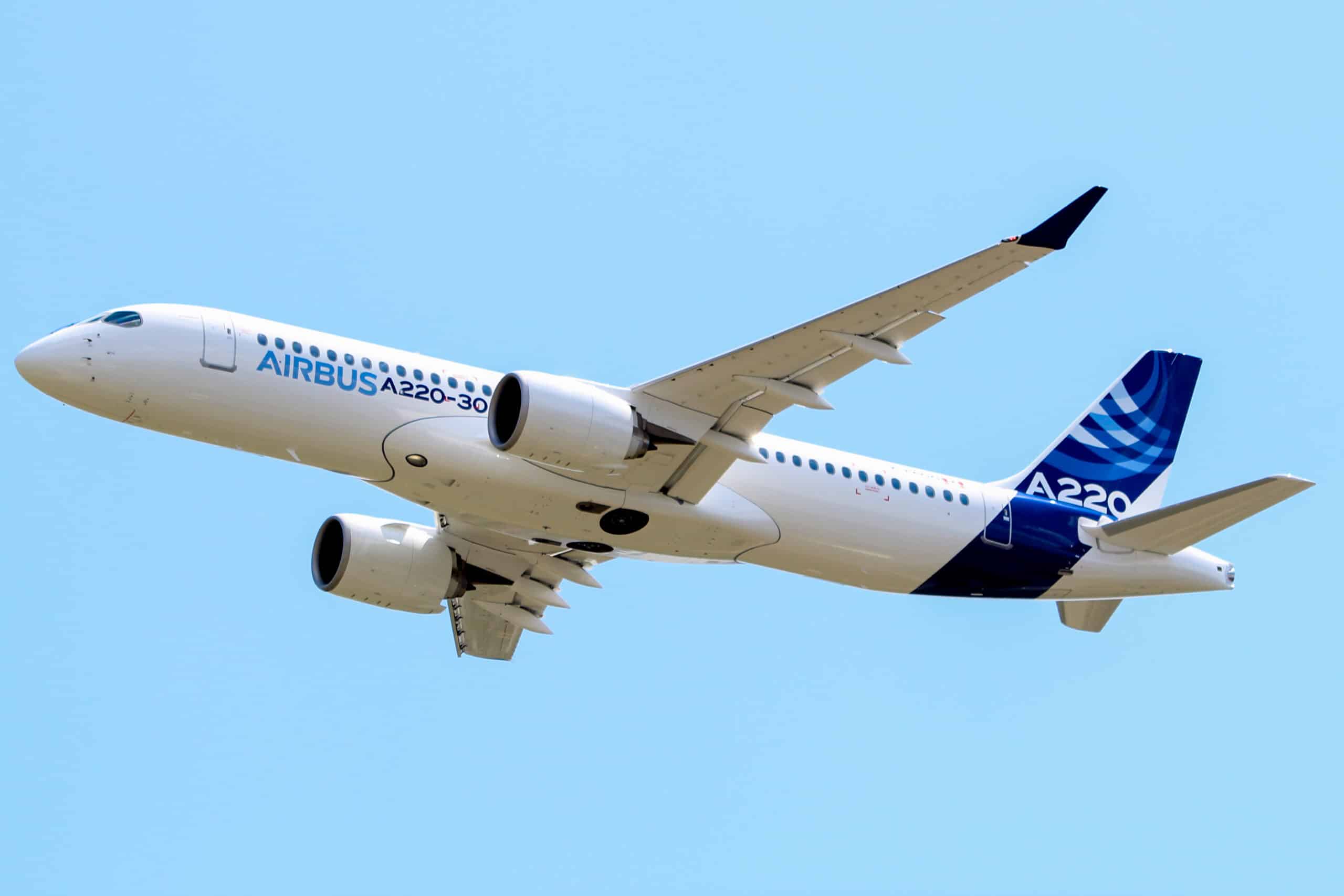Aerospace
Jet Airways places Airbus in the lead for its $5.5 billion contract for A220/320 aircraft
According to persons familiar with the situation, Airbus SE has emerged as the front-runner to secure an aircraft order from Jet Airways India Ltd. worth up to $5.5 billion, strengthening the European planemaker’s position in the world’s fastest-growing aviation sector.

According to persons familiar with the situation, Airbus SE has emerged as the front-runner to secure an aircraft order from Jet Airways India Ltd. worth up to $5.5 billion, strengthening the European planemaker’s position in the world’s fastest-growing aviation sector.
The people, who asked to remain anonymous since the discussions are confidential, stated that the talks are for A320neo jets and A220 aircraft. A final decision has not yet been made, according to the people, and conversations are also ongoing with Boeing Co. and Embraer SA. Although any transaction would cost more than $5 billion if it were made at sticker pricing, reductions are usual in such large purchases.
Requests for comment from representatives of Boeing and Airbus were not immediately fulfilled.
The former top private airline in India, Jet Airways, received its pilot’s licence last month, making history as the first company to be revived under the country’s new bankruptcy regulations. The airline’s operational preparedness was confirmed by the flying permit, indicating the airline’s transformation into a “new avatar with fresh funds, altered ownership, and new management,” per a statement.
As of Monday, a Jet Airways official said: “We are in final discussions with lessors and OEMs for aircraft. Once we have reached a decision, we will announce our aircraft choice and fleet plan.” “We are researching every option to see which one will work best for us.”

Aerospace
Boeing Transfers Rocket Stage to NASA, Paving Way for Human Moon Mission

Boeing has achieved a significant milestone by providing NASA with the second core stage of the Space Launch System (SLS) rocket.
This crucial component, crafted at NASA’s Michoud Assembly Facility (MAF), is set to propel the Artemis II crew into lunar orbit, marking humanity’s return to deep space after a 50-year hiatus.
The monumental Boeing-built rocket stage, the largest element of the Artemis II mission, will embark on a journey aboard the Pegasus barge, traveling 900 miles to NASA’s Kennedy Space Center.
Comparison of two legendary aircraft B777x vs B747 aircraft:Click here
Upon arrival, it will be meticulously integrated with other essential Artemis II components, including the upper stage, solid rocket boosters, and NASA’s Orion spacecraft within the iconic Vehicle Assembly Building. This intricate integration process is a vital step toward the eagerly anticipated Artemis II launch, slated for 2025.
“Boeing-built products helped land humankind on the moon in 1969, and we’re proud to continue that legacy through the Artemis generation,” remarked Dave Dutcher, vice president and program manager for Boeing’s SLS program. “Together, with NASA and our industry partners and suppliers, we are building the world’s most capable rocket and paving the way to deep space through America’s rocket factory in New Orleans.”
NASA, Lockheed Martin Reveal X-59 Quiet Supersonic Aircraft:Click here
The delivery of Core Stage 2 marks a significant achievement in the evolution of the SLS rocket. Towering over 200 feet and powered by four RS-25 engines, this core stage, coupled with two solid-fueled booster rockets, will generate a staggering 8.8 million pounds of thrust. This immense power is crucial to launching Artemis II and future missions into the vast expanse of space.
The SLS rocket stands unparalleled in its capability to transport both crew and substantial cargo to the moon and beyond in a single launch. Its extraordinary capacity will facilitate the delivery of human-rated spacecraft, habitats, and scientific missions to destinations including the moon and Mars, ushering in a new era of space exploration.
-

 Travel1 week ago
Travel1 week agoAir India to Expand US Operations with Three New Routes After a Decade
-

 Travel2 weeks ago
Travel2 weeks agoWhy We Should Avoid These Stamps in a Passport
-

 Airlines1 month ago
Airlines1 month agoInvestigations Reveal Fake Chinese Titanium in Boeing and Airbus Jets
-

 Tech4 weeks ago
Tech4 weeks agoChina’s CATL Plans 1,800-Mile Electric Plane Launch by 2027
-

 Airport3 days ago
Airport3 days agoTop 10 Largest Airports in the World by Size
-

 Aerospace4 weeks ago
Aerospace4 weeks agoChina’s Fighter Jets Turn Wings into Autonomous Drones
-

 Airlines4 days ago
Airlines4 days agoAir India Rolls Out A350s for Delhi-New York JFK and Newark Routes
-

 Defence3 weeks ago
Defence3 weeks agoBoeing Enhances Chinook with New Engines and Block II Upgrades at $96 Million







